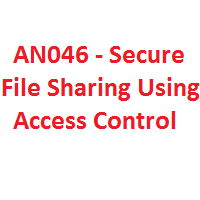ABSTRACT:
Mobile Android applications regularly approach delicate information and assets on the client gadget. Abuse of this information by pernicious applications may result in security ruptures and touchy information spillage. A precedent would be a noxious application clandestinely recording a classified business discussion. The issue emerges from the way that Android clients try not to have authority over the application abilities once the applications have been conceded the asked for benefits upon establishment.
Much of the time, be that as it may, regardless of whether an application may get a benefit relies upon the particular client setting and along these lines we require a setting based access control component by which benefits can be powerfully conceded or denied to applications in view of the particular setting of the client. In this paper we propose such an entrance control system. Our execution of setting separates between firmly found sub-territories inside a similar area. We have altered the Android working framework with the goal that setting based access control confinements can be determined and authorized. We have played out a few tests to survey the productivity of our entrance control system and the exactness of setting discovery.
EXISTING SYSTEM:
Past work on security for versatile working frameworks centers around limiting applications from getting to touchy information and assets, yet generally needs productive strategies for implementing those limitations as indicated by fine-grained settings that separate between nearly found subareas. Besides, a large portion of this work has concentrated on creating approach frameworks that don’t confine benefits per application and are just successful framework wide. Likewise, existing approach frameworks don’t cover all the conceivable manners by which applications can get to client information and gadget assets. At long last, existing area based strategy frameworks are not sufficiently exact to separate between close-by areas without additional equipment or area gadgets. In mostaccording to setting, the strategies will be consequently connected at whatever point the client is inside a pre-characterized physical area and time interim.
PROPOSED SYSTEM:
In this paper, we propose a setting based access control (CBAC) component for Android frameworks that permits cell phone clients to set arrangement strategies over their applications’ use of gadget assets and administrations at distinctive settings. Through the CBAC component, clients can, for instance, set limited benefits for gadget applications when utilizing the gadget at work, and gadget applications may re-gain their unique benefits when the gadget is utilized at home. This adjustment in gadget benefits is naturally connected when the client gadget coordinates a pre-characterized setting of a client characterized arrangement. The client can additionally determine a default set of strategies to be connected when the client is situated in a non-already characterized area.
HARDWARE REQUIREMENT:
CPU type : Intel Pentium 4
Clock speed : 3.0 GHz
Ram size : 512 MB
Hard disk capacity : 40 GB
Monitor type : 15 Inch shading screen
Keyboard type : web console
Mobile : ANDROID MOBILE
SOFTWARE REQUIREMENT:
Working System: Android Studio
Language : ANDROID SDK 7.0
Documentation : Ms-Office
BASE PAPER: Context based Access Control Systems for Mobile Devices



